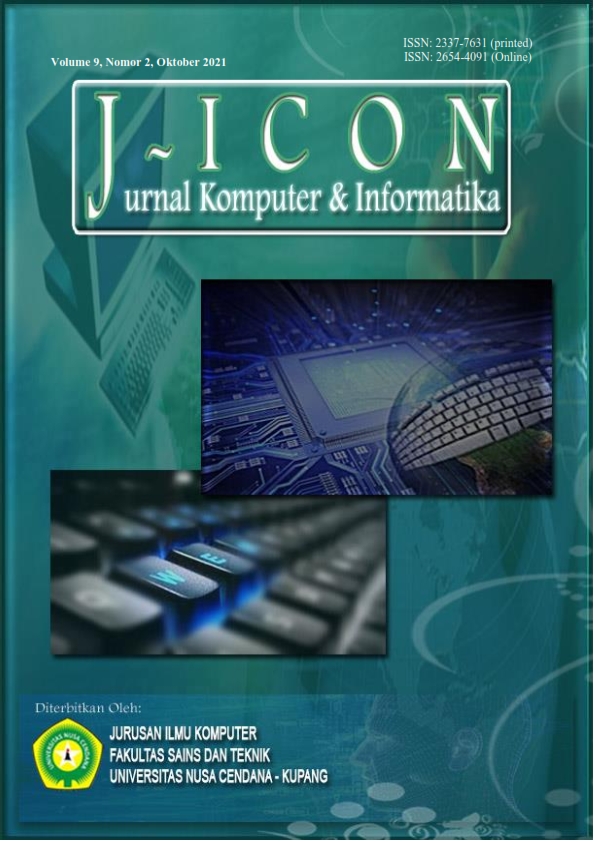ESTIMATION OF THE BASIC REPRODUCTIVE NUMBER OF THE DISTRIBUTION OF DENGUE FEVER IN THE CITY OF BIMA, 2018 - 2020
Abstract
In this paper, the mathematical model used is the host-vector model for transmission on of dengue hemorrhagic fever where the host population consists of three compartments, namely susceptible host, infected, and recovered, while the vector population consists of two compartments, namely susceptible vector and infected vector. From this model, an estimate of the basic reproduction number will be constructed with the assumption that the number or humans and mosquitoes infected with the dengue virus grows exponentially with the same growth rate. Applications using field data in the City of Bima obtained an basic reproduction number estimates of . Because the estimated values for the basic reproduction number are greater than one, it illustrates that the spread of dengue hemorrhagic fever in Bima City from 2018 to 2020 is categorized as an epidemic.
Downloads
References
M. Z. Ndii, N. Anggriani, J. J. Messakh, and B. S. Djahi, “Estimating the reproduction number and designing the integrated strategies against dengue,” Results Phys., vol. 27, p. 104473, Aug. 2021, doi: 10.1016/j.rinp.2021.104473.
M. Z. Ndii, R. I. Hickson, D. Allingham, and G. N. Mercer, “Modelling the transmission dynamics of dengue in the presence of Wolbachia,” Math. Biosci., vol. 262, pp. 157–166, Apr. 2015, doi: 10.1016/j.mbs.2014.12.011.
G. Chowell et al., “Estimation of the reproduction number of dengue fever from spatial epidemic data,” Math. Biosci., vol. 208, no. 2, pp. 571–589, Aug. 2007, doi: 10.1016/j.mbs.2006.11.011.
M. K. Enduri and S. Jolad, “Estimation of reproduction number and non stationary spectral analysis of dengue epidemic,” Math. Biosci., vol. 288, pp. 140–148, Jun. 2017, doi: 10.1016/j.mbs.2017.03.007.
A. K. Supriatna, “Estimating the basic reproduction number of dengue transmission during 2002-2007 outbreaks in Bandung, Indonesia,” Dec. 2009, [Online]. Available: https://apps.who.int/iris/handle/10665/170937.
R. P. Sanches and E. Massad, “A comparative analysis of three different methods for the estimation of the basic reproduction number of dengue,” Infect. Dis. Model., vol. 1, no. 1, pp. 88–100, Oct. 2016, doi: 10.1016/j.idm.2016.08.002.
R. Hurint, M. Lobo, and M. Z. Ndii, “Analisis Sensitivitas Model Epidemi SEIR,” Natural Science: Journal of Science and Technology, vol. 6, no. 1, 2017.
Y. A. Adi, F. Adi-Kusumo, L. Aryati, and M. S. Hardianti, “A Dynamic Model of PI3K/AKT Pathways in Acute Myeloid Leukemia,” J. Appl. Math., vol. 2018, p. 2983138, Nov. 2018, doi: 10.1155/2018/2983138.
Y. A. Adi, “A Within-host Tuberculosis Model Using Optimal Control,” Jurnal Teori dan Aplikasi Matematika, vol. 5, no. 1, 2020.
M. Z. Ndii, Pemodelan Matematika Dinamika Populasi Dan Penyebaran Penyakit Teori, Aplikasi, Dan Numerik. Deepublish, 2018.
Jafaruddin, S. W. Indratno, N. Nuraini, A. K. Supriatna, and E. Soewono, “Estimation of the Basic Reproductive Ratio for Dengue Fever at the Take-Off Period of Dengue Infection,” Comput. Math. Methods Med., vol. 2015, p. 206131, Aug. 2015, doi: 10.1155/2015/206131.
J. Ma, “Estimating epidemic exponential growth rate and basic reproduction number,” Infect. Dis. Model., vol. 5, pp. 129–141, Jan. 2020, doi: 10.1016/j.idm.2019.12.009.
C. Favier et al., “Early determination of the reproductive number for vector-borne diseases: the case of dengue in Brazil,” Trop. Med. Int. Health, vol. 11, no. 3, pp. 332–340, Mar. 2006, doi: 10.1111/j.1365-3156.2006.01560.x.
Dinas Kesehatan Kota Bima, “Data Demam Berdarah,” Bima, 2020.
E. M. Banni, M. A. Kleden, M. Lobo, and M. Z. Ndii, “Estimasi Reproduction Number Model Matematika Penyebaran Malaria di Sumba Tengah, Indonesia,” Jambura Journal of Biomathematics, vol. 2, no. 1, pp. 13–19, 2021.
Copyright (c) 2021 J-Icon : Jurnal Komputer dan Informatika

This work is licensed under a Creative Commons Attribution 4.0 International License.
The author submitting the manuscript must understand and agree that if accepted for publication, authors retain copyright and grant the journal right of first publication with the work simultaneously licensed under a Creative Commons Attribution (CC-BY) 4.0 License that allows others to share the work with an acknowledgment of the work’s authorship and initial publication in this journal.
 Ariyanto Ariyanto(1*)
Ariyanto Ariyanto(1*)




